We need to shift our focus to co-design and focus on WHAT we are building in the digital space if we want to achieve social innovation.
“Magic happens if the outcome of a specific challenge is not credited to anyone in particular, and the results are shared. — Niels Kijf”
Co-creation is the driver for Innovation.
Cognitive diversity, time-boxing, (online) co-creation techniques, and choosing trust over fear are vital ingredients for how we will work in the near future. Add a just cause to your brand, and join a pool of meaningful brands that build what the world needs. Interested in adding a just cause to your brand definition? Download the free workshop.
Challenge / Where are we now?
In our daily lives, we have many ways to get work done. They are ranging from working alone, together, as a team, or even a team of teams. We can co-work, collaborate, co-design, and everything in between.
There are many work improvement methods like Kaizen, Lean, Agile/SaFe, Six Sigma, Theory of Constraints. All these systems focus on how to get stuff done in the most efficient way possible, and some add rigorous quality control. All these systems focus on logistics, time, and progress measurement. The functional side of work.
Reduction of waste, time spent, and production quality are all valid arguments. Still, I believe that 2020 has taught us one crucial lesson: we also need to focus on WHAT we are building, WHOM we are building with, and HOW we can innovate the way we work. Taking into account our remote working habits.
The way we organize ourselves in the real world reflects in the software we build. So we have to re-think how we organize ourselves if we want to innovate the way we work.
We need real social technology to unleash our greatest human potential.
Most humans are terrible in understanding and communicating complex information. Today, our information transmission speed is near real-time, yet our tools for handling information did not evolve at all. We gained some central storage and collaboration tools, but most of our tools are iterated versions of what we had 30 years ago.
Digital file management needs a severe overhaul if we want to innovate the way we work.
Our brains are not well suited for the vast amount of information we receive every day, and information overload is real.
Understanding and using information becomes even more challenging when the pressure is on. When we add sliding scales like time, exponential growth, science, new insights, and decision-making based on partial information, it becomes humanly impossible to manage information streams and keep people in the loop.
When it comes to decision making, at some point, hierarchy takes over, and decisions are made based on inconclusive data. This technocratic approach is getting old, and we need to invent new ways to work together and using collective genius, management of reputation, and credibility.
We need to improve our decision-making processes. We need to learn to design holistically, look beyond our organizations, and look past our knowledge bubbles. The time for utility software is over; we need to combine hard & soft skills in our digital design efforts.
Problem / Our human nature stands in the way of innovation.
Our human nature to silo everything is becoming a real problem for critical decision-making. We need to learn to design software that helps us in our decision-making process and supports us in understanding complex data.
We need to learn to build co-design techniques into our software. The Internet is a unique tool, yet our silo-ed mindsets keep us from really innovating our ways of working with software design.
We seldomly ask consumers, customers, bold-thinkers, and outliers into our design and strategy workshops; instead, we study and research them. This colonial design thinking mindset stifles innovation.
We live in a connected world, but we still silo ourselves in homogeneous hierarchies when it comes to working. We need to embrace Network Thinking and build Conversational Assistants that help us create, manage, and operate co-design challenges.
We need to build one source of truth, compound our effort and build assistants that visually supports us in our decision-making.
Help / Background on co-design techniques.
Co-design is an overarching term for participatory design, co-creation, and other open design processes.
Work improvement techniques mentioned like Agile, Scrum, and lean tend to focus on the HOW. Co-creation focuses on the WHAT and, more specifically, the WHOM.
Co-creation captures the HOW in well-prepared and time-boxed exercises.
Co-creation challenges the traditional organization-client relationship by inviting lead-consumer, outliers, and bold-thinkers into strategic design sessions.
Using the Internet, we can ask anybody to participate and choose a different holacratic way of working — one where everybody has the same authority.
Co-design is a perspective and attitude shift; a company is not trying to please its customers; it involves her customers in producing better products and allows everybody to improve everything.
The realization that customers are stakeholders too is the biggest eye-opener. We must design software that makes it possible to invite a diverse set of people around design challenges. Co-creation software that enables us to Design with Data. Connecting multiple stakeholders in our ecosystem will allow us to tap into our greatest human potential.
Results / What I noticed in the work field
We misunderstand co-creation quite often. Coworking, a collaboration between companies, or even working in a team, was enough for people to jump the gun and call the process co-creation.
Although this could be just unfamiliarity with the subject, I am under the impression that people become hesitant and nervous when we start talking about how we work, when ego and status come into play.
I also noticed a phenomenon of downplaying co-creation, which is intriguing. The hippos (highest paid person’s opinion) seem to have the biggest problem with co-creation, as co-creation doesn’t do status or rank.
Is it a pure lack of understanding, or is it self-interest to avoid co-creation?
When we start talking about how we work, things become personal, but this is precisely where social innovation and disruption are hidden. My curiosity is most definitely triggered when people start protecting their territory.
If we look at Google’s People Analytics team’s research, they came to the following insights; five important dynamics play a role in effective teams.

Google Re:work team
The first two are personal reasons. People want to feel safe, and people want to be able to dependable on one another. When it comes to co-creation, these two crucial dynamics are shaken up quite a bit as new people on which you don’t have much background enter working-sessions, so it becomes harder to trust them.
Could this be the reason people are hesitant towards co-creation?
LET’S DO A PRE-COVID THOUGHT EXPERIMENT.
“You are invited for a co-creation session in a neatly prepared workspace. Other colleagues from different departments join the room. Suddenly you see your boss enter the room. New faces — people you never met before — walk in; they seem a bit nervous and introduce themselves as (lead) consumers of your product. A few minutes later, oddly dressed people take a seat at the table, the outliers entered the room.
Last but not least — a smiling person enters the room — introducing herself as the co-creation facilitator of today. She knows she has to disarm some people, but her big smile helps.”
How does this make you feel?
If we would do this thought experiment in real life, it would undoubtedly push some people out of their comfort zone. However, this will depend on your character and personality. Some will love it; others will shiver.
I will investigate this matter intensively when we start the Stellar UX workshops. When you bring a diverse set of people together, magic will happen, skills, results, and outcomes begin to flourish.
The co-creation facilitator has an important role. He or she has to put people at ease, creates a safe environment. A facilitator is like glue between people, you don’t have to know each other the work together.
CO-CREATION SHOWS THE FOLLOWING:
- Including stakeholders in discussion and ideation sessions will result in outstanding quality & efficiency and lowers development costs.
- Because your consumer is present, you get a better understanding of their needs and gain much knowledge.
- Validation of ideas and concepts with your customers in real-time is an enormous advantage, especially if you invite your lead-customers to your sessions.
- Reduces blockage and obstacles; there is a lot of knowledge and decision-making power in the room.
Benefits on a social level;
- People who are involved tend to buy into their efforts; they support the outcome. (Stakeholder buy-in)
- People become motivated and engaged; they start believing in the process.
- Individual competence increases, and it bonds people for future effectiveness.
The co-creation method answers this question: “Who should be the co-designers for this project, and why aren’t they together in this room!”
CO-DESIGN TECHNIQUES & SOFTWARE ARE MATCH MADE IN HEAVEN AND AN UNCHARTED AREA IN CONVERSATIONAL SOFTWARE DESIGN.
I would give co-creation software the following definition:
“Co-creation software facilitates co-design techniques that enable a diverse group of stakeholders* to engage in specific design challenges. It enables a group of people to design with data on location or remotely and compounds effort and insights into actionable information.”
A digital assistant will guide us through a design process, keep the pressure on, and masters the management of data and knowledge gathered. Conversational Assistants support us in organizing our knowledge into exceptional co-created value.
Using co-creation as a co-design method for the Stellar workshops is a fantastic idea; as we all know, innovation thrives on new thinking, diversity in perspectives, and hunches. Co-creation is a burst of mutual effort resulting in co-created value.
* Your lead-consumers and bold thinkers in your domain are stakeholders too!

Co-creation Schematic 2020.
Learnings
As you notice, there is a lot of insight, knowledge, and experience packed in this article. Because of the collaborative nature, you have to participate in a co-creation session to experience its real power.
Co-creation does not only result in Stellar outcomes. It removes obstacles, speeds up processes, and lowers costs. At the same time, buy-in compounds and social aspects bond people together.
We also learned that co-creation depends on the willingness to step out of your comfort zone, and people who value status over results avoid co-creation all together.
TIP: Recognize that co-creation is a voluntary process and works best if people have chosen to do so.
Use co-creation to upgrade your design principles into Stakeholder Truth
Co-creation and extracting your design principles for your Assistant can be extremely powerful and results in what we call Stakeholder Truth.
Stakeholder Truth; A set of co-developed vision statements and actionable design principles will guide your production team in the right direction from the start. Co-created design principles will streamline your design process and open the path to Stellar product design.
Want to define your conversational assistant in a co-creation session?
Please have a look at our workshops on gumroad.


